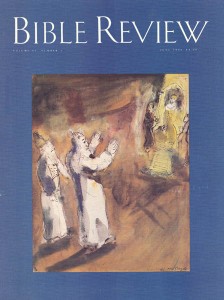The ten plagues that struck the Egyptians and culminated in the watery destruction of Pharaoh’s army in the depths of the Red Sea (Exodus 7–12) are the stuff of Cecil B. De Mille extravaganzas. But the story of the ten plagues is far more than grist for the Hollywood scriptwriters’ mill: As commentators on the Bible have long noted, the plague narrative is a tightly structured tale with many layers of meaning. Ziony Zevit joins this distinguished line of biblical exegetes with “Three Ways to Look at the Ten Plagues.” Zevit examines two plausible explanations for the plagues—that they were a series of natural disasters and that they were specific attacks on individual Egyptian gods—and then puts forward a new way of understanding the story, one that links the plagues to the Creation events in Genesis.

Zevit is professor of biblical literature and Northwest Semitic languages at the University of Judaism, the Los Angeles affiliate of the Jewish Theological Seminary of America. He has published widely in scholarly journals and is the author of a book on the development of Hebrew spelling in the biblical period, which enables scholars to date ancient writings based on the spelling of certain words. Zevit’s current research focuses on the literary principles used in Hebrew, Phoenician and Ugaritic poetry and on the folk religion of the ancient Israelites as derived from biblical and archaeological evidence.
Already a library member? Log in here.
Institution user? Log in with your IP address.

